Woodstock, Dartmouth among proponents of soft-celled Guardian Caps for football
| Published: 11-10-2023 9:44 PM |
When the Dartmouth College and Woodstock High football teams play crucial games today, their players will have prepared for them in one similar fashion. Both programs utilize Guardian Cap soft-shell helmet covers during practice.
“I love them and I think the kids have grown accustomed to them,” said Woodstock coach Ramsey Worrell, whose team challenges neighboring rival Windsor in Saturday morning’s VPA Division III title game at Rutland High.
“I don’t think they loved them at the start, but now they see more and more teams using them, so it’s less unusual.”
Woodstock and Dartmouth began using the caps widely during 2021 practices, and the NFL jumped in for its 2022 training-camp workouts. Earlier this season, a Minnesota high school made news by wearing its caps during regular-season games, but that’s yet to occur at higher levels.
“There’s potential for game use in the future, but I’m not sure how long it will be,” said Ben Schuler, Dartmouth’s certified athletic trainer for football. His team must beat visiting Cornell on Saturday at Memorial Field and homestanding Brown next week to remain in the Ivy League title race.
“We try to use NFL data to provide the best possible head protection we can.”
The issue, it seems, is that without game data, few want to use the caps in a contest that counts. At the moment, however, no one wants to be the first to wear them in a game without data.
Hanover High coach Sam Cavallaro isn’t even interested in practice use, saying his team has suffered virtually no practice concussions in recent seasons.
Article continues after...
Yesterday's Most Read Articles
 Homeless Upper Valley couple faces ‘a very tough situation’
Homeless Upper Valley couple faces ‘a very tough situation’
 Lebanon’s Jewell back from auto accident, more aware of ‘drowsy driving’ dangers
Lebanon’s Jewell back from auto accident, more aware of ‘drowsy driving’ dangers
 Plan on track to ship Upper Valley mail to Connecticut for sorting
Plan on track to ship Upper Valley mail to Connecticut for sorting
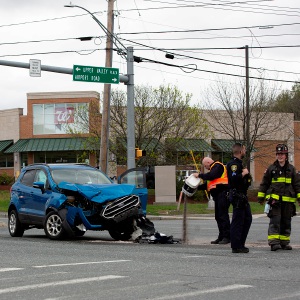 West Lebanon crash
West Lebanon crash
 Crane crash on Interstate 89
Crane crash on Interstate 89
The NFL’s report after its 2022 training camp trial was optimistic, however.
“Position groups required to wear Guardian Cap … saw a more than 50% reduction in concussions versus a previous, three-year average,” the report read.
Worrell, a Texas native and rabid backer of that state’s University of Texas Longhorns college football program, saw footage of UT’s players wearing Guardian Caps during practice a few years back. He ordered enough for two high school teams’ worth, so the Wasps will be sporting them for some time.
“The company said we were the first to order them in the state of Vermont, but we scrimmaged Brattleboro (this season) and both of us had them on,” Worrell said. “I don’t know how much they’re helping, but I’m basing our using them on people smarter than me.
“I’ve heard that on other teams, some kids are buying them to use individually.”
According to the Atlanta-based company’s online site, Guardian Cap was created in 2010 and retails for $70 per shell in the regular model and $125 for an “NFL model,” although it doesn’t specify what the costlier version’s advantages might be.
The site claims its product is worn by more than 300,000 athletes at nearly 300 universities, more than 3,000 high schools and more than 750 youth programs. Guardian Cap, which attaches to a helmet’s face mask with Velcro straps, can absorb up to 33% of collision impact, according to its manufacturer.
“The Guardian Cap … is designed to move independently of the helmet below, allowing for forces to be redirected around the head,” reads site text. “The hard shell then has lower forces transmitted to it and, in turn, conveys lower forces to the interior helmet padding and to the head.”
Count Dartmouth center Nick Marinaro in. The junior, nicknamed “Sauce,” bangs heads with 300-pound defensive linemen during practices and games and sees Guardian Caps as smart technology.
“When you hit heads, it’s a little bit less of an impact,” he said of wearing the caps. “There isn’t the pop you get without them. If it softens the blow even marginally, you should wear them.”
On the other side of the line, and the issue to some degree, is Big Green nose guard Josiah Green. The junior believes the softness of the Guardian Cap’s cushion cells and their Spandex covering creates a grabbing effect when they strike artificial turf.
“When we go head-to-head, it does lower the impact,” Green said. “But when you hit the ground, (the caps) don’t slide, and all the force and pressure goes to your neck. I think if they developed a plastic one, we might be able to wear those in games.”
Schuler said he and late Dartmouth head coach Buddy Teevens, who was almost obsessively interested in football safety, wondered about that very issue. They decided it wasn’t a significant worry because Big Green players don’t intentionally tackle each other to the ground.
“We’re not landing on our heads at full speed,” Schuler said. “We wear them for glancing blows, and the (caps) should disperse that force across a broader surface, so the brain doesn’t slide as much in the skull.
“The idea is that, over time, they prevent something small from becoming something big.”
Tris Wykes can be reached at twykes@vnews.com.

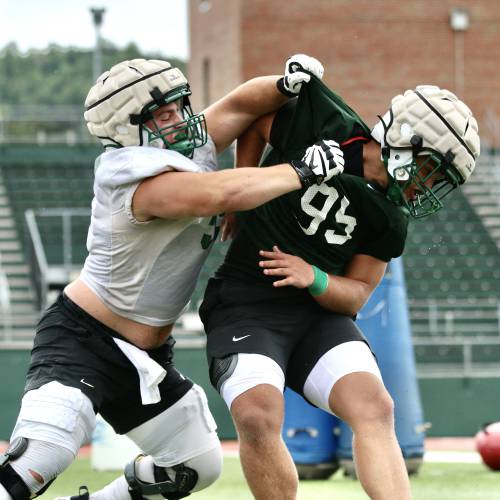

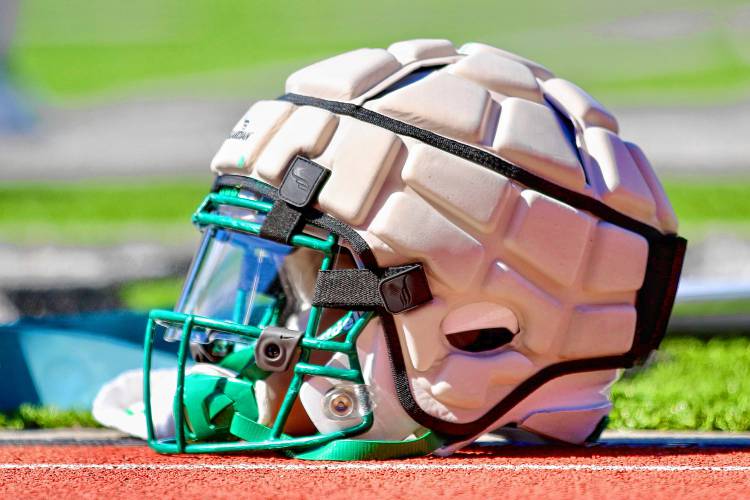
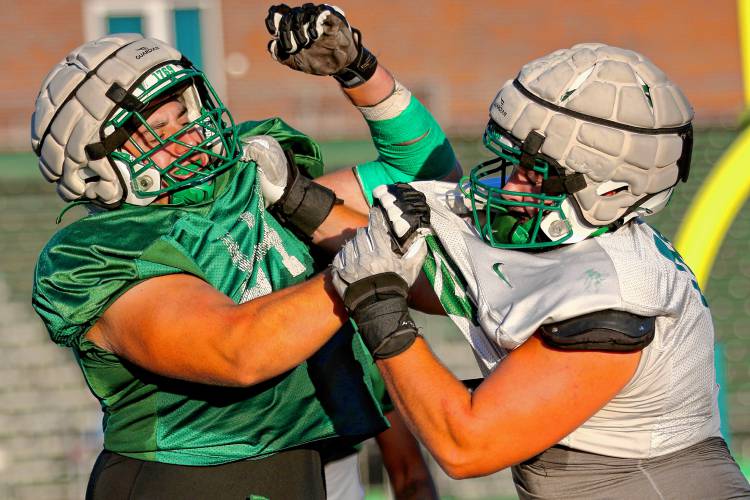


 Local Roundup: Lebanon boys tennis blanks Kingswood
Local Roundup: Lebanon boys tennis blanks Kingswood Young Oxbow baseball team struggles, but coach still finds joy in teaching the game
Young Oxbow baseball team struggles, but coach still finds joy in teaching the game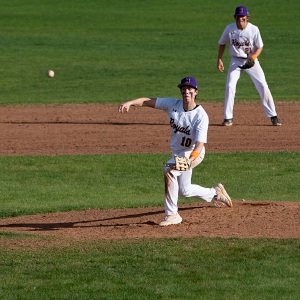 Local Roundup: Hartford tops Woodstock in close girls lacrosse contest
Local Roundup: Hartford tops Woodstock in close girls lacrosse contest
